House Entrance Pole (RBCM 15559 b)

House Entrance Pole
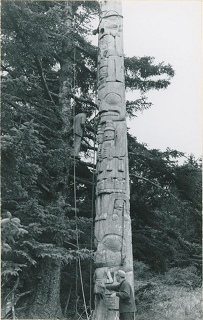
Members of the Totem Pole Preservation Committee team preparing to take down and section the pole at SGang Gwaay Llnagaay, 1957. PN 7662.
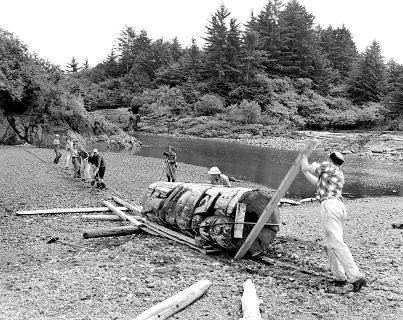
Moving a pole section along the beach at SGang Gwaay Llnagaay, 1957. I-28964.
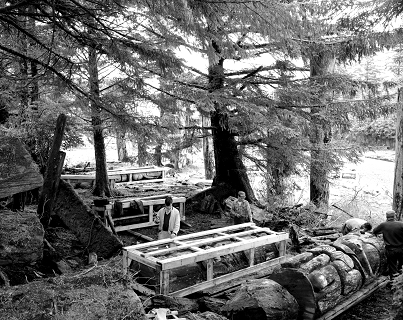
Pole sections crated and ready to be removed. I-28966.
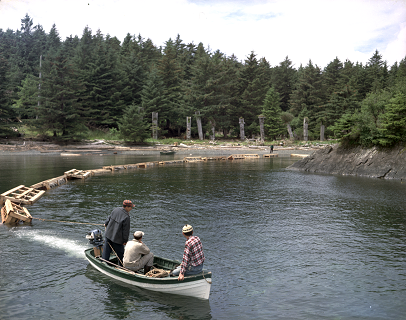
The poles sections in their crates are towed to a nearby boat. I-15316.
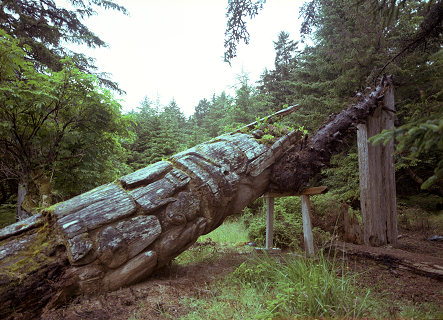
One of the remaining poles at SGang Gwaay Llnagaay, Anthony Island, 1980. Beautiful British Columbia Magazine photograph. I-15311.
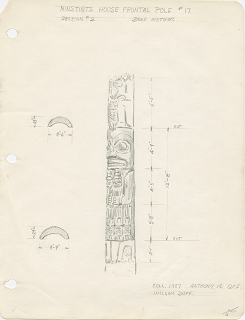
Drawing of the pole section by John Smyly.
This is a section of a pole from SGang Gwaay Llnagaay (Red Cod Island Town, also known as Ninstints) on Anthony Island off the southern tip of South Moresby Island, Haida Gwaii. Anthony Island was designated a BC Provincial Park in 1957, a provincially designated heritage site in 1980, and a UNESCO world heritage site in 1981. In 1988, it became part of the Gwaii Haanas National Park Reserve and Haida Heritage Site. An agreement between the Haida Nation and the Government of Canada in 1993 ensures the preservation of the natural environment and Haida cultural practices in Gwaii Haanas. (Subsequent agreements reconciled Haida and Crown titles and addressed conservation of the marine ecosystem.) The Haida Watchman program maintains an active presence at the village sites of South Moresby and, although there are no longer permanent residents there, the villages are not abandoned. On the 20th anniversary of the Gwaii Haanas Agreement the Haida Nation and Canada raised the first monumental pole to be raised in Gwaii Haanas in over 130 years. The legacy pole was carved by Jaalen Edenshaw with the assistance of his brother, Gwaai Edenshaw, and Tyler York.
The same year as SGang Gwaay Llnagaay became a BC Provincial Park, the Totem Pole Preservation Committee removed poles from the site for preservation in the Provincial Museum (now the Royal BC Museum) and the Museum of Anthropology at the University of BC in Vancouver. This section is from a pole that stood in front of Raven House at SGang Gwaay. Raven House is a house name brought from Kaidju Llnagaay (Songs of Victory Town), and the pole may have belonged to Kanskinai, the same man who owned memorial poles 15558a and 15558b. The section shows a large figure holding two small humans wearing ringed hats, a symbol of status and wealth gained through potlatching. A row of small, inverted figures at the bottom can be read as the dance apron of the large figure. The pole has been referred to as the Bear Mother pole because its imagery suggests the story of a woman who married a bear and had half-bear, half-human children.
Do you have a story to share about this item? Add your voice to the community.